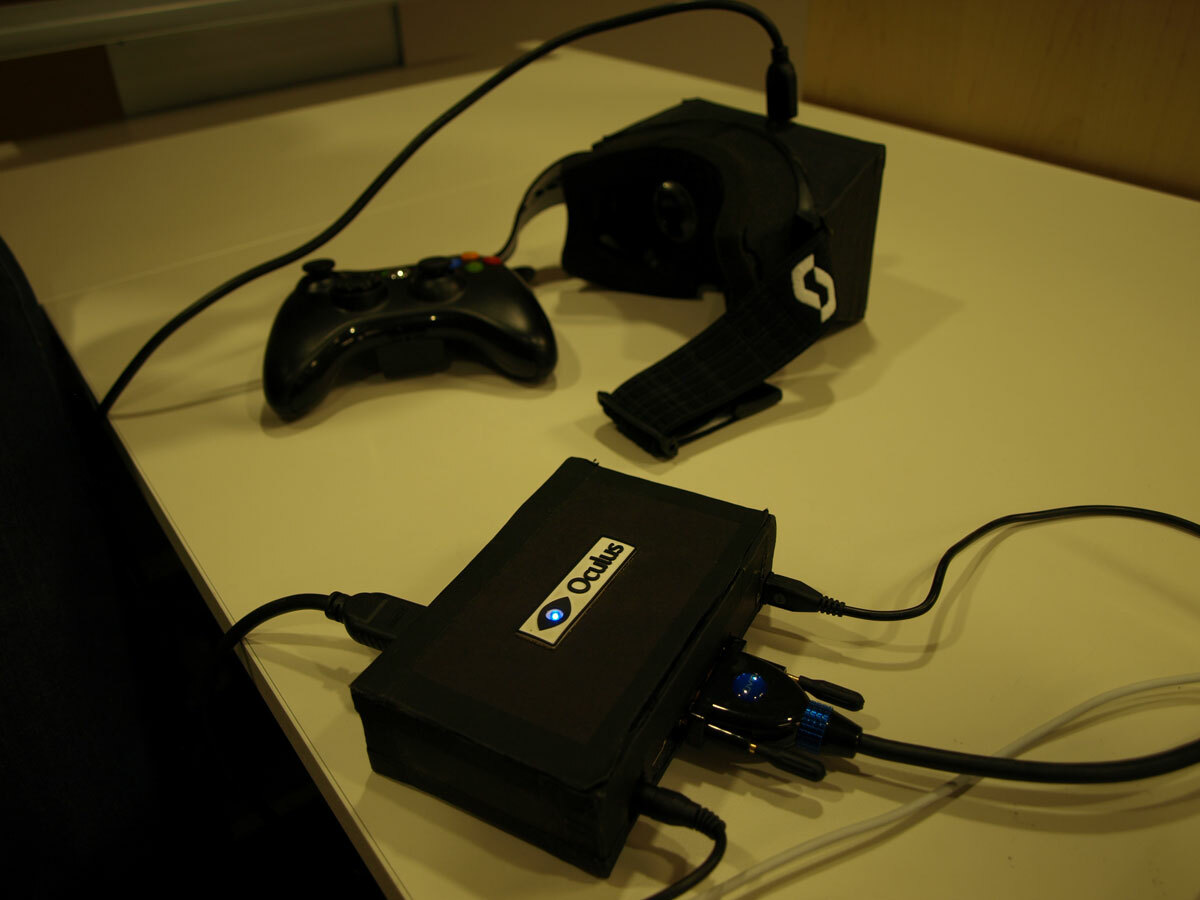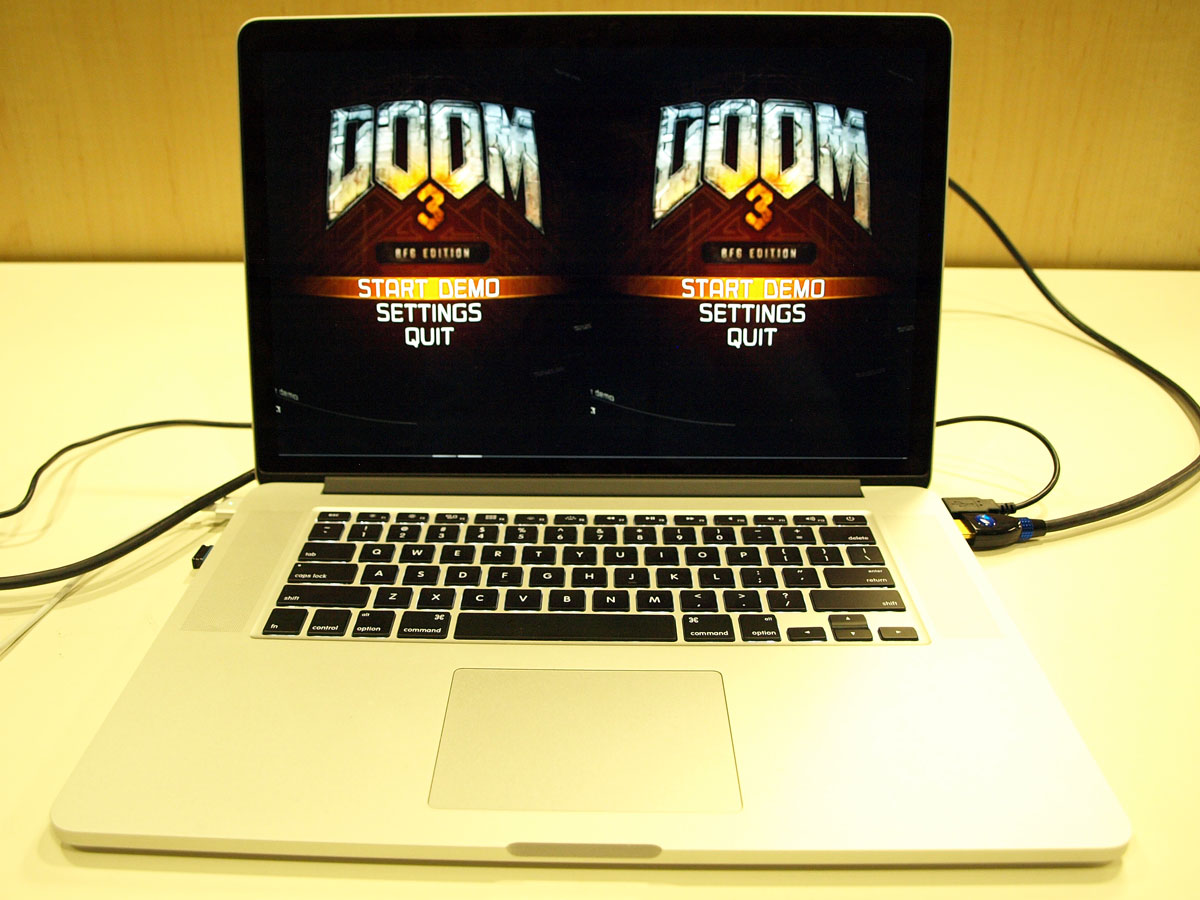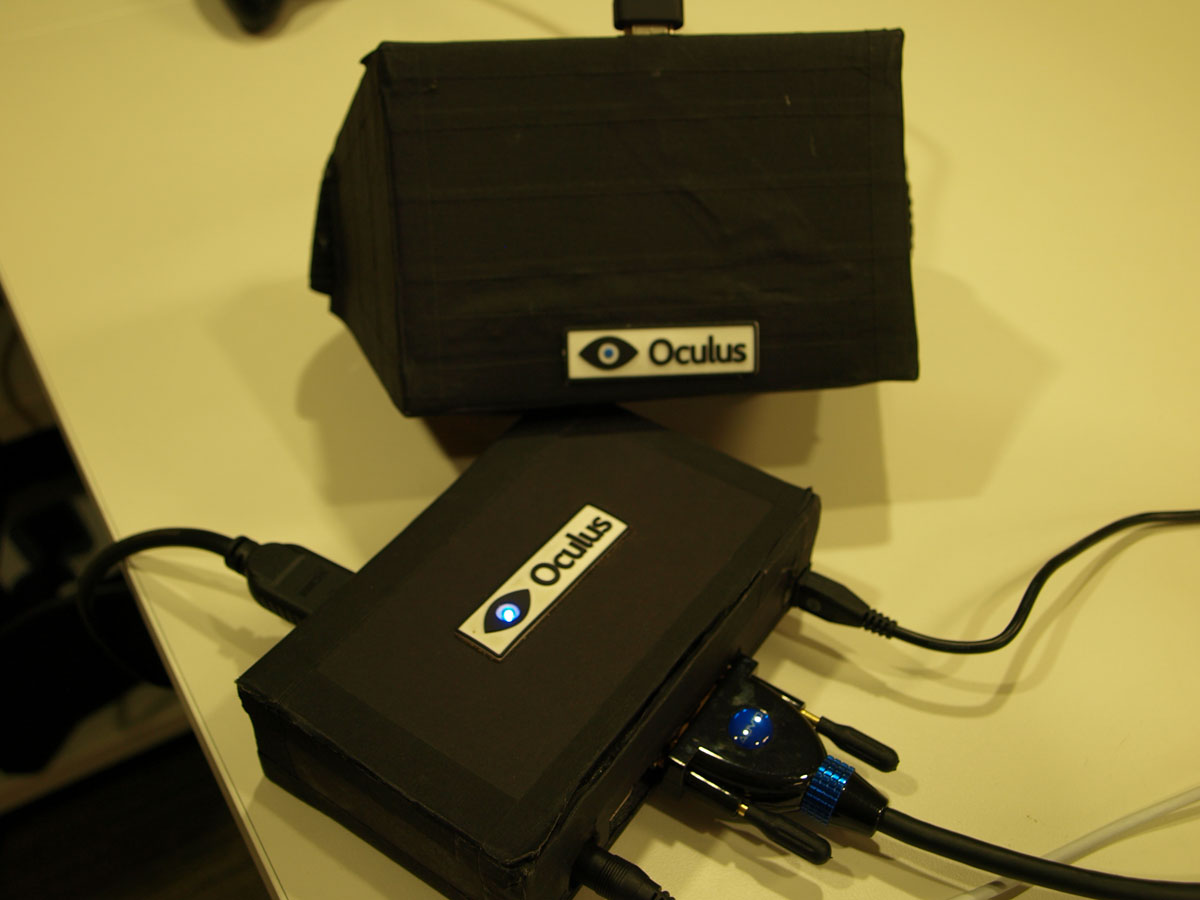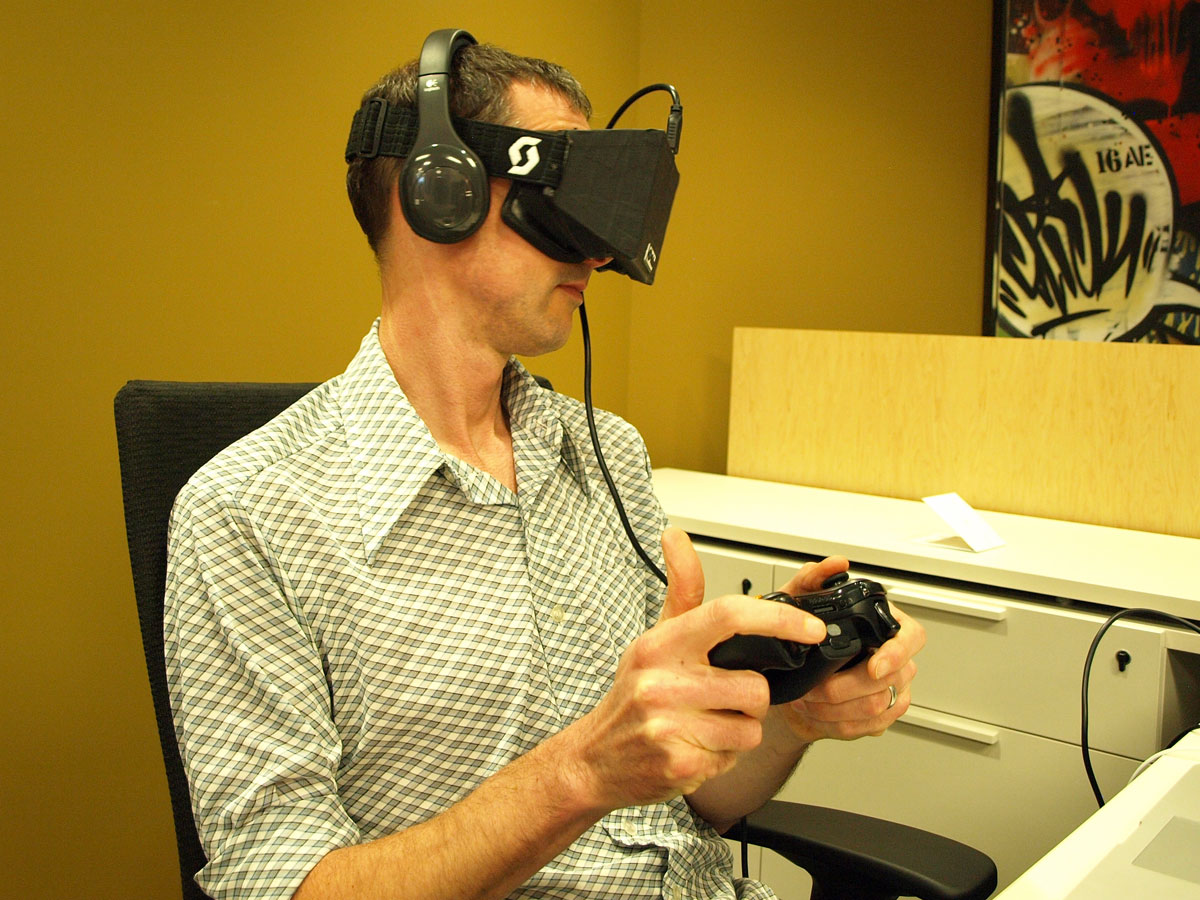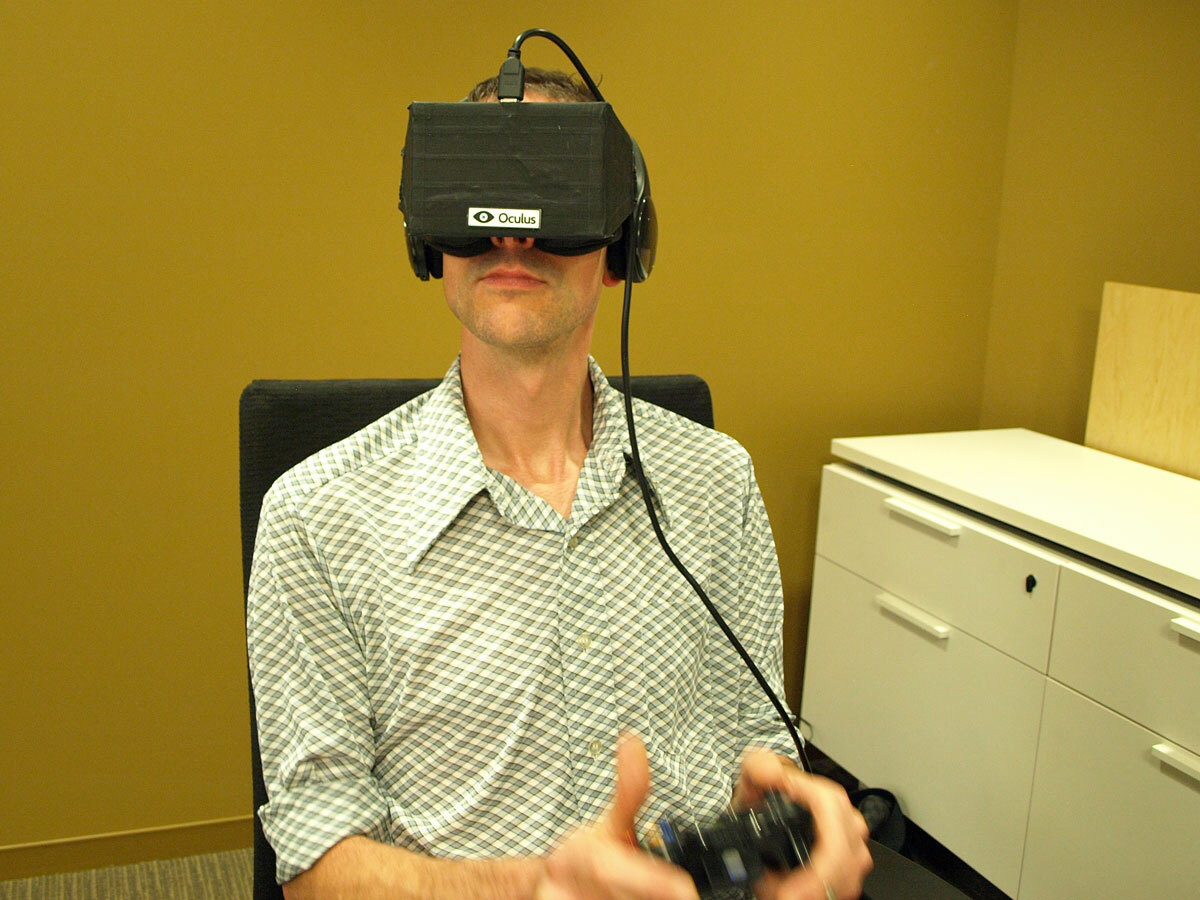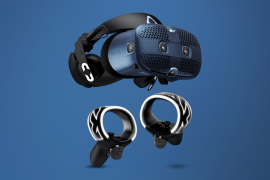Oculus Rift 3D virtual reality headset – hands-on review
Stuff ventures out to California to don the 3D virtual reality headset that's set to change the face of gaming
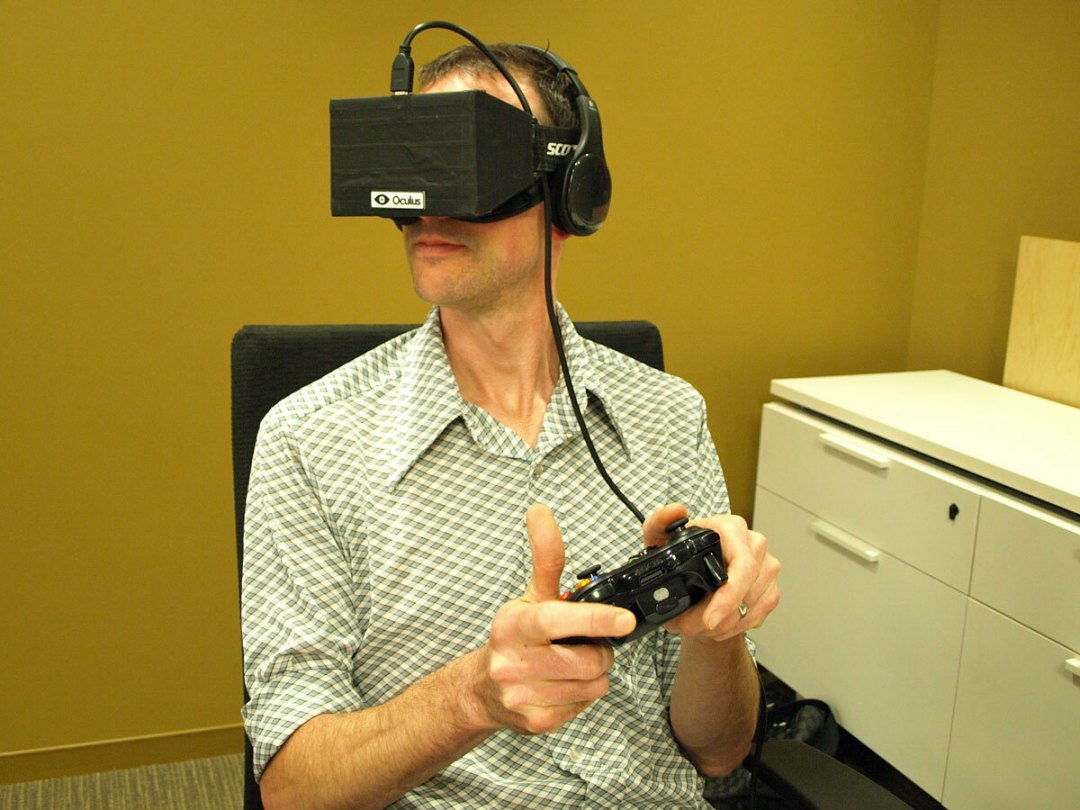
Last summer, a mysterious headset at E3 called Oculus Rift wowed press and developers alike. Within weeks, the home-made 3D prototype had turned into one of the biggest Kickstarter projects of all time, raising over £1.5m to fund a new kind of VR headset: light, affordable and ultra-high tech. Stuff headed out to Oculus HQ in Orange County, California to find out whether the Rift can deliver the truly immersive fragfest gamers are howling for.
Oculus Rift – first impressions
We test the Oculus Rift on a MacBook Pro running Doom 3 and a newer, more advanced game engine that Oculus asks me not to identify (they’re still in commercial discussions).
The current prototype is still a work in progress, with a duct-taped outer shell and a frame from a pair of Scott snow goggles. Sexy, not so much – though using ski goggle frames is a smart decision. They’re super comfy.
Even in its prototype state, the Rift is light and very comfortable to wear, with a single cable plugging in at the top, between your eyes.
Oculus Rift – gaming
The gaming experience is simply stunning. The 3D effect is perfect and the focus distance feels totally natural – no awkward squinting or refocusing required. Looking around the world is fast and butter smooth –especially with the Rift’s wraparound 110-degree field of view.
Response time is almost perfect, with every twitch of your head reflected immediately in the world – it really is as if we’re actually inside the game rather than just watching or playing it. The experience of floating through the virtual environment is so natural that it’s easy to forget that we’re still sitting in an office chair rather than roving through an industrial landscape hunting zombies.
Oculus Rift – pixelation
There are a couple of downsides, though. The limits of the Rift’s 1280×800-pixel screen show in visible pixels, and that hyper-realism eventually triggers some mild motion sickness, which only gets worse until we remove the headset. However, the final version of the Rift – due in 2014 – is expected to feature a Full HD display, fixing at least one of those issues.
Oculus Rift – Quickfire Q+A
Your Oculus questions, answered.
Is it comfortable?
Incredibly. It’s as lightweight, comfortable and well-ventilated as a pair of high-end ski goggles.
Is there any lag?
Almost none. With a response time of under 50 milliseconds, it’s better than many LCD televisions.
What’s the image quality like?
Pretty good. But because the Rift stretches a single 1200×800 mobile phone display over your entire field of vision, some pixellation is visible.
Will it make me feel motion sickness?
Probably, especially at first. The totally immersive experience takes some getting used to, and anyone who gets queasy reading in cars might feel nauseous.
Will I need to buy a new console?
That depends on Microsoft, Sony and Nintendo. Initially, the Rift will only work with PCs and Android devices.
Will it work for all types of games?
Yes, if developers design their games for the Rift. However, first person shooters can feel too fast-paced for such a realistic technology.
You might also like
The best music-making gadgets for Christmas 2012
